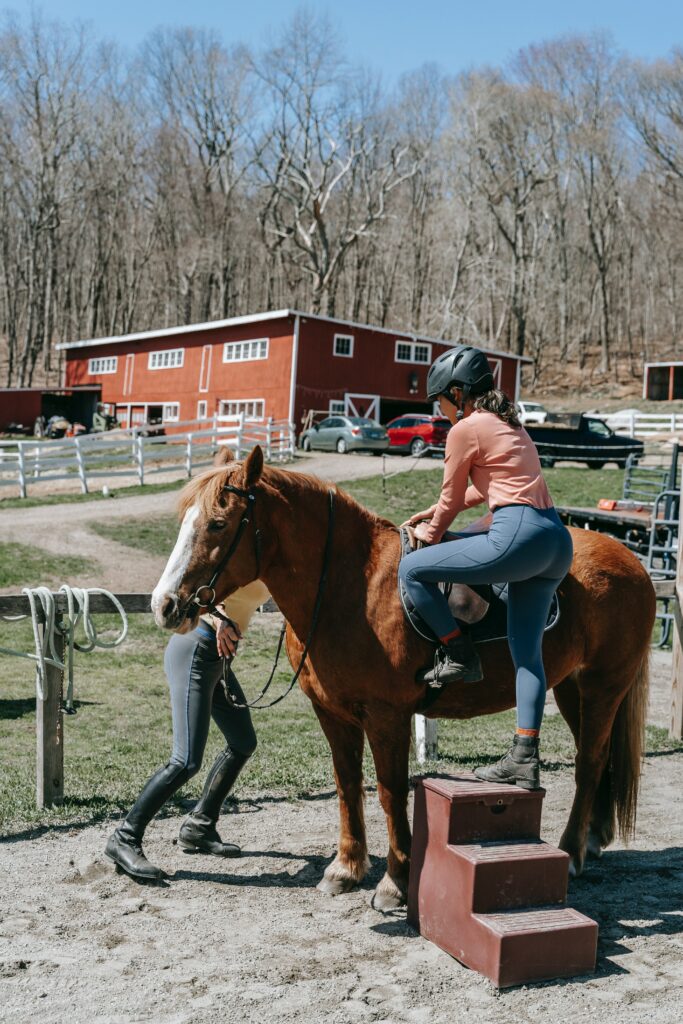According to the findings of a recent study, certain horses can have negative associations with mounting blocks.
You can tell if a horse is stressed by looking at their facial expression when you lead them to the mounting block.
A new study found that when approaching the mounting block, a group of hobby riding school horses displayed signs of tensionin their expressions. According to Katarzyna Olczak, PhD, of the Department of Horse Breeding at the National Research Institute of Animal Production in Balice, Poland, this implies that certain horses develop negative associations with the mounting block, probably because of uncomfortable mounting and/or riding situations.
During the 2022 International Society for Equitation Science (ISES) Conference, in August 9–12 in Hartpury, U.K.; Olczak shared their results. She said that the horses (in their study) standing nearby the mounting block display signs of anxiety and/or discomfort. It’s possible that horses find mounting by unskilled riders unpleasant, which creates unfavourable associations with the mounting block. To safeguard the wellbeing of working horses, horse riding coaches should focus more on horse-friendly mounting and riding, suggested Olczak.
Research process

The Horse Grimace Scale (HGS), which was initially created by Italian scientists, was used by the researchers to assign facial expression scores to each horse in each condition. These points were primarily based on whether the horse had lowered ears, tightened orbital muscles, tensed chewing muscles, a tensed muzzle, strained and dilated nostrils, or eyelids that covered more than half of the eye.
The researchers asked two impartial observers to assess the images in order to verify their findings.
Research findings
According to Olczak, the observers discovered that the horses’ facial expression scores significantly altered from portraying a non-stressed state to a stressed state between being walked to the block and standing next to it.
Olczak claimed that the results were incredibly accurate. She remarked, this is the only scientific behaviour research where she has seen such obvious outcomes. It didn’t matter if the horse was wearing a saddle, Olczak said. The horses’ facial expressions clearly changed before and after they reached the mounting block in either case. The difference between using the saddle and not using it was modest, but hardly noteworthy, she continued.
But the mounting block itself was certainly important, according to Olczak. You can observe how simply being in close proximity to the mounting block, without a rider in sight, affects the horses’ facial expressions.
She suggested that more research could be able to shed light on the variables influencing these unfavourable mental states brought on by the mounting block.
Source: The Horse

